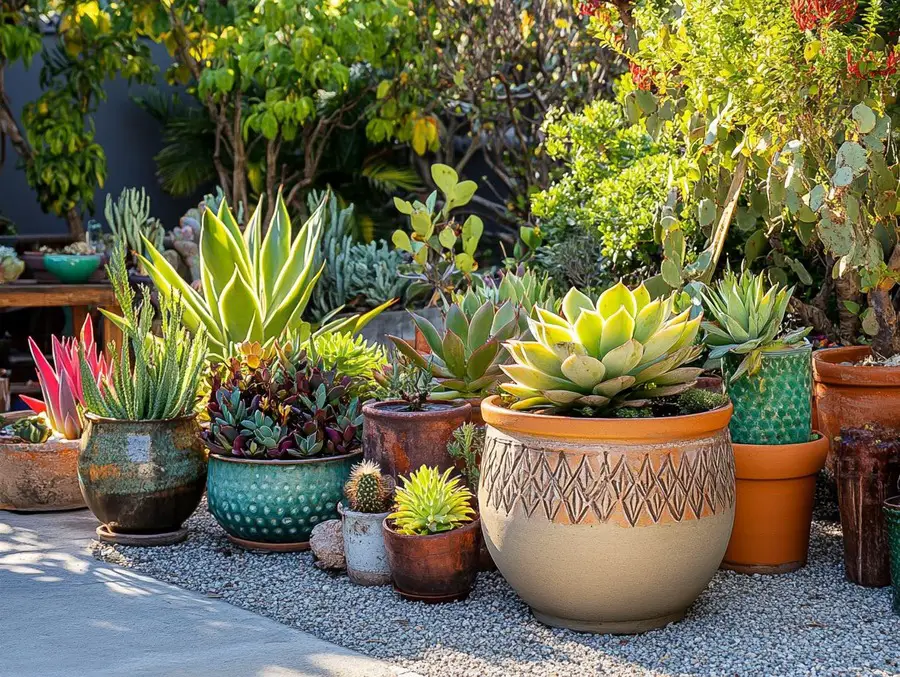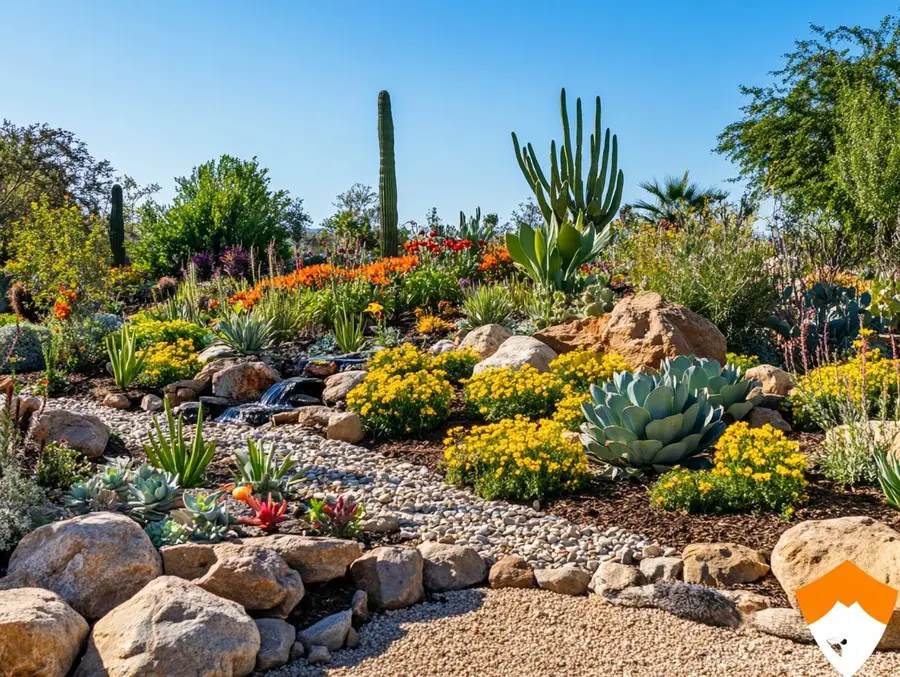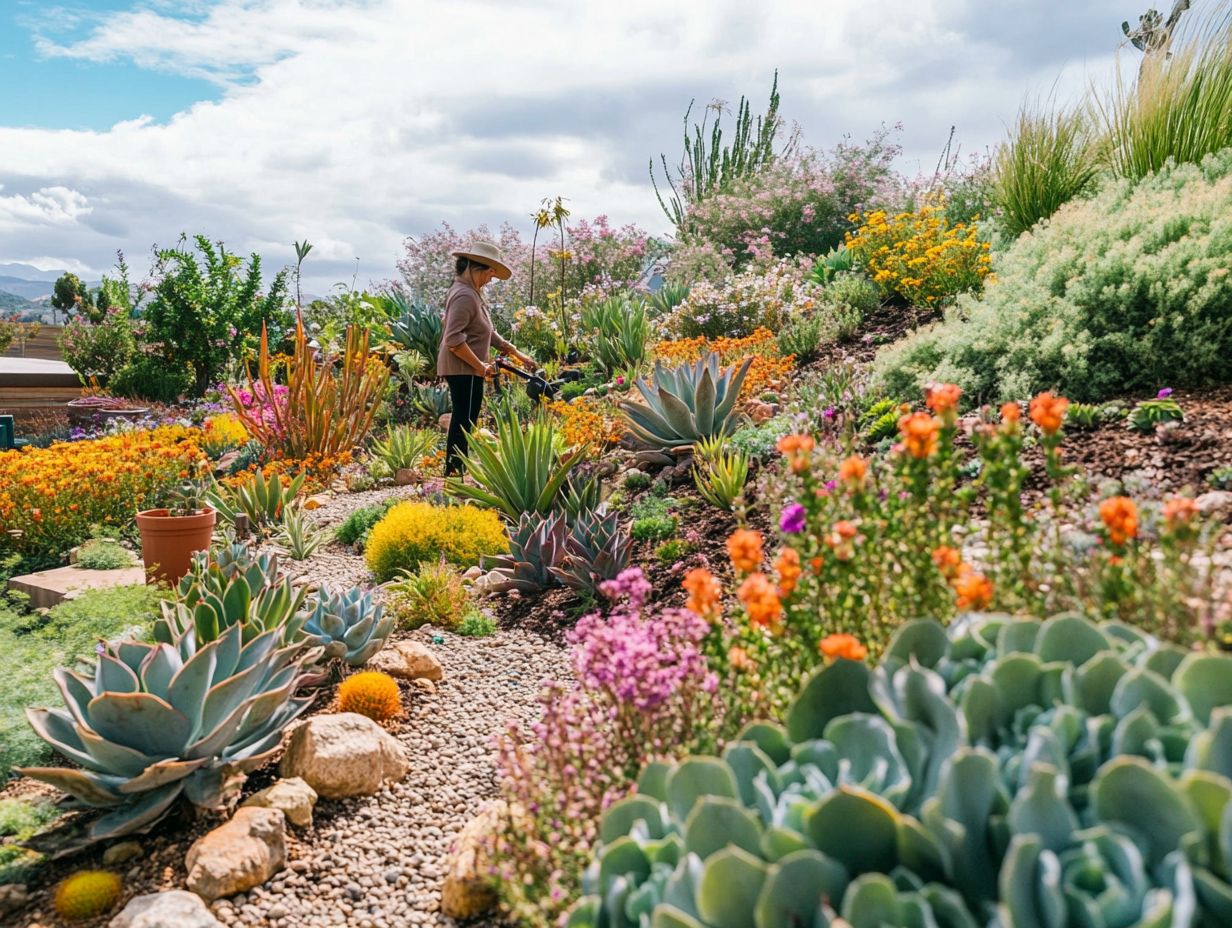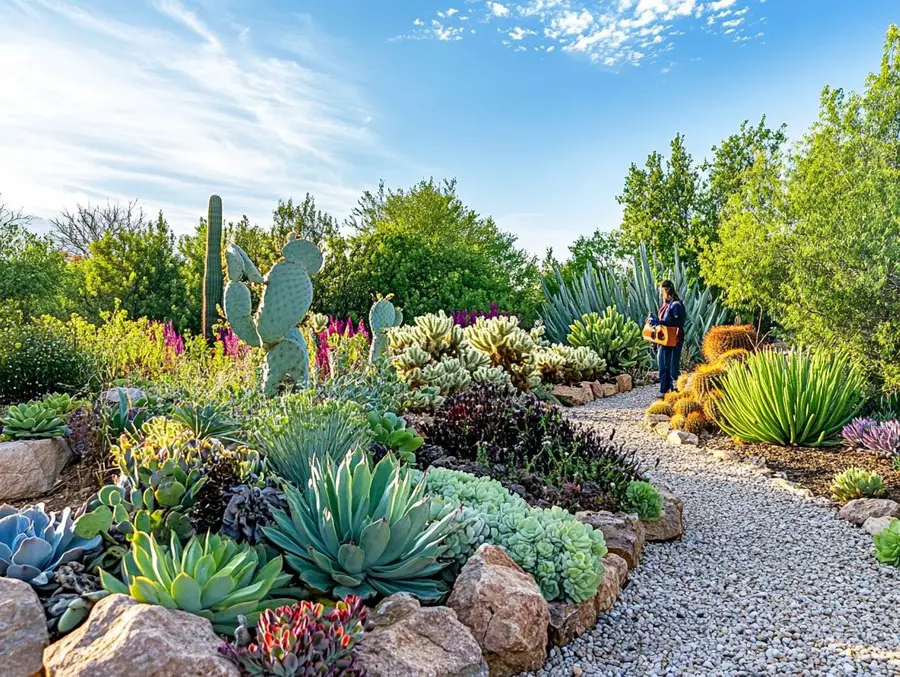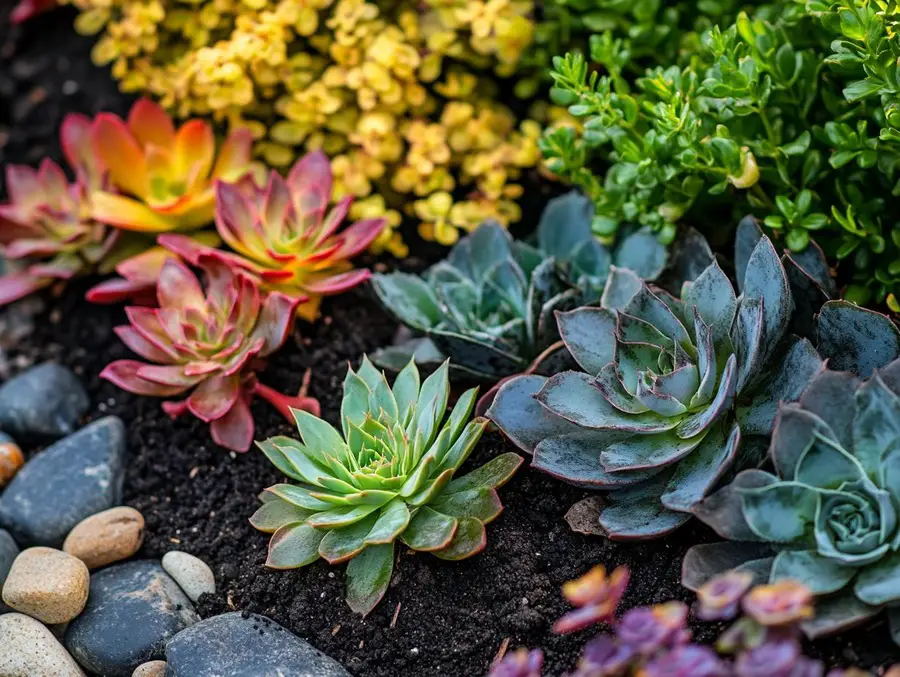We use affiliate links. If you purchase something using one of these links, we may receive compensation or commission.
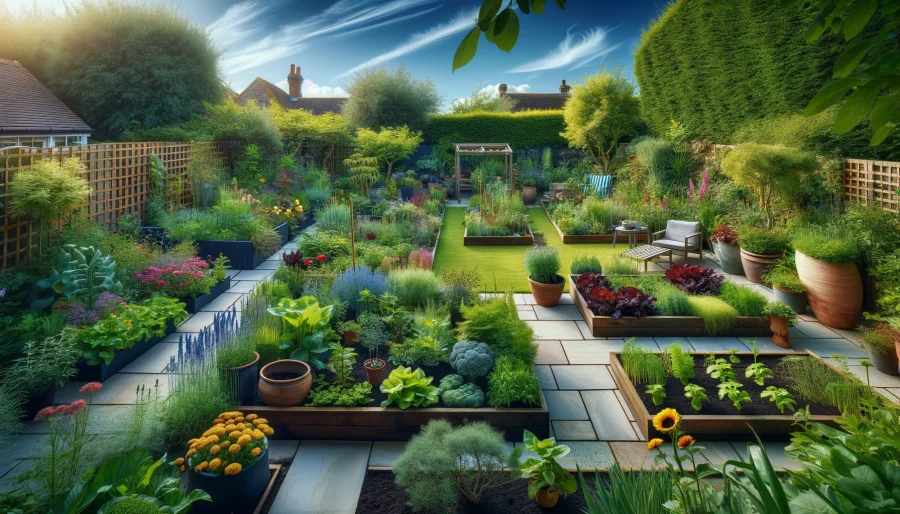
Howdy, fellow green thumbs! I’m here to share some top-notch tips to help you grow and transform your backyard garden.
Ready to turn your outdoor space into a stunning, fruitful haven? Well, you’re in the right place!
Whether you’re looking to add a splash of color with new flowers or craving some fresh homegrown veggies, I’ve got you covered.
So, grab your gardening gloves, and let’s dive in!
Key Takeaways:
- Expanding your backyard garden involves assessing your current space.
- Planning a new layout,
- Incorporating a variety of new plants and garden features.
- You can create a flourishing garden by introducing new elements and making the most of your available space.
How To Grow and Transform Your Backyard Garden
Thinking about kicking off your own backyard garden but feeling a bit lost on where to start? No worries, you’re in the right spot!
Let’s dive into all the awesome perks of having your own garden patch, what you’ll need to get the ball rolling, and the must-have tools and plants for a thriving garden.
I’ll walk you through prepping your backyard for gardening, keeping your green pals happy and healthy, and even spicing things up by expanding and evolving your garden space.
Whether you’re just dipping your toes into the gardening world or you’re a seasoned pro with a green thumb, there’s a little something for everyone in this handy guide. So, let’s get growing!
Why Start a Backyard Garden?
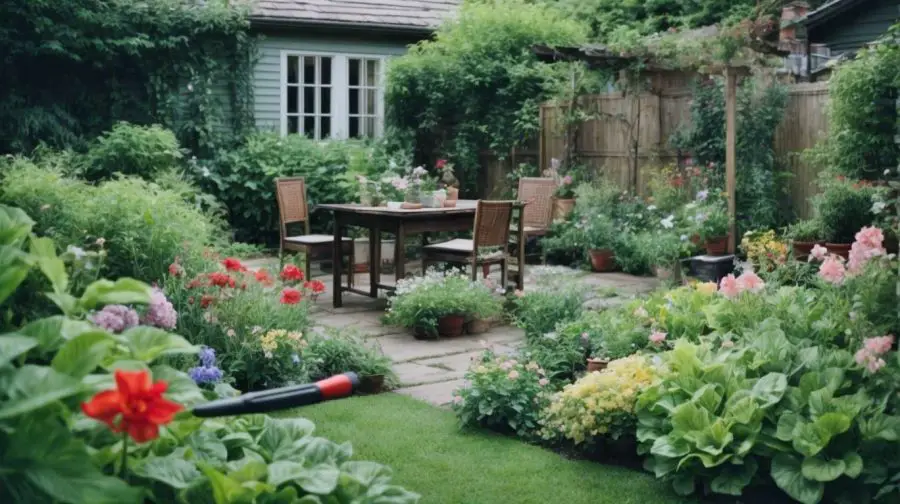
Ever thought about starting a backyard garden? It’s a fantastic way to connect with nature, grow your own produce, and transform your outdoor space into a blooming paradise.
Backyard Garden Benefits
There’s something special about watching the plants you’ve nurtured from tiny seeds burst into life.
Tending to your garden provides a peaceful escape from the daily grind, filling you with a sense of calm and joy.
Plus, there’s nothing quite like the taste of fresh, homegrown veggies, packed with nutrients and free from any nasties because you’re in charge of what goes into your soil.
And let’s not forget about our buzzing friends! Your garden becomes a cozy haven for all sorts of helpful critters, from bees to birds, playing a vital role in our ecosystem.
But wait, there’s more! Having your own backyard garden means you’ve got a mini workout right at your doorstep. Digging, planting, and harvesting keep you moving and grooving, which is great for your overall health.
So, whether you’re a green-thumb newbie or a gardening guru, there’s always something new and exciting to discover in the world of backyard gardening. Let’s dig in and get those hands dirty!
What You’ll Need to Kickstart Your Backyard Garden
Ready to dive into the world of gardening? Here’s a quick rundown of the essential tools you’ll need to get your backyard garden up and growing:
- Trowels: Your go-to tool for planting and digging. They’re perfect for getting those small plants snugly into the soil and for precision work in your garden beds.
- Pruners: Keep your garden looking sharp and tidy with a good pair of pruners. They’re great for snipping off unwanted branches and shaping your plants just the way you like.
- Watering Cans: Hydration is key! A watering can ensures your plants get just the right amount of water to thrive and stay healthy.
- Gloves: Protect those hands! Gloves are a gardener’s best friend, keeping your hands safe from dirt, thorns, and other surprises you might encounter while digging around.
With these tools in hand, you’ll be all set to start planting and nurturing your very own backyard oasis. Happy gardening!
Essential Tools for Gardening: A Gardener’s Toolkit
Whether you’re a newbie or a seasoned green thumb, having the right tools in your gardening arsenal is key. Here’s a list of essential tools that’ll help you grow a thriving garden:
- Trowels & Hand Forks: Perfect for planting and aerating your soil. These handy tools make it easy to dig, scoop, and loosen up the earth.
- Pruners & Secateurs: Keep your garden neat and tidy. Use these for precision cutting and shaping of small branches and stems.
- Weeders: Say goodbye to pesky weeds! Weeders are great for tackling those unwanted guests right at the root.
- Watering Cans: Hydration is crucial! A good watering can help you provide just the right amount of water to your plants.
- Gloves: Protect your hands from dirt and thorns. A sturdy pair of gloves is a must-have for any gardener.
- Soil pH Tester: Keep your soil in check. This handy gadget helps you monitor the acidity or alkalinity of your soil, ensuring your plants are growing in optimal conditions. Get it on Amazon.
- Plant Stakes & Ties: Give your tall or climbing plants the support they need. Stakes and ties help them grow upright and strong.
Keeping Your Tools in Tip-Top Shape
Taking care of your tools is just as important as taking care of your plants. Here are a few tips:
- Clean and Dry: After each use, clean and dry your tools to prevent rust or corrosion.
- Sharpen Regularly: Keep your blades sharp for clean cuts. Regular sharpening ensures your tools stay effective.
- Oil Metal Parts: A little oil goes a long way. Oiling metal parts helps prevent sticking and prolongs the life of your tools.
With these essential tools and maintenance tips, you’ll be well-equipped to tackle any gardening challenge that comes your way. Happy gardening!
What Are the Best Plants to Grow in a Backyard Garden?
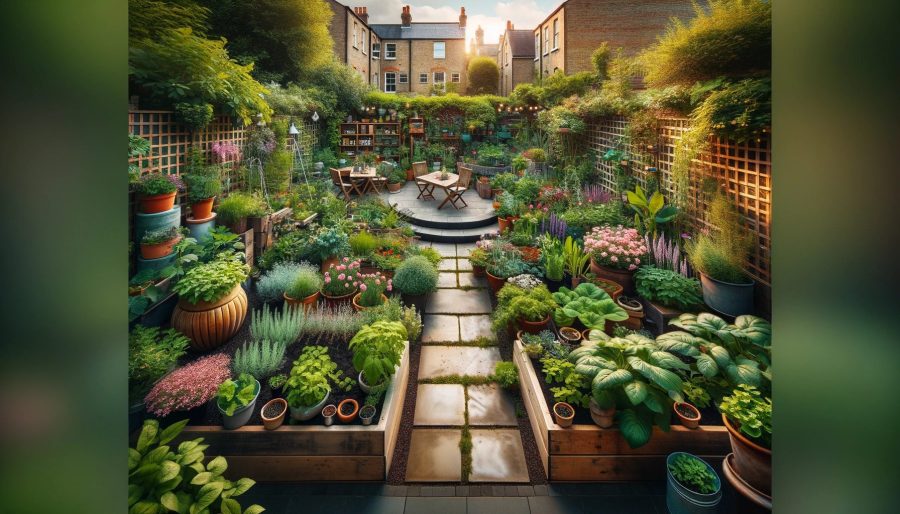
Choosing the right plants for your backyard garden can turn it into a vibrant and productive haven. Here’s a list of some top picks to get you started:
- Tomatoes: A garden favorite! These sun lovers need well-drained soil and regular watering to produce juicy, delicious fruits.
- Peppers: Add a pop of color and flavor. Whether sweet or spicy, peppers thrive in similar conditions to tomatoes.
- Herbs: Basil, mint, and rosemary are easy-to-grow herbs that add freshness to any dish. They prefer well-drained soil and moderate watering.
- Flowers: Roses are classic beauties that bring fragrance and charm. Marigolds and zinnias are colorful, easy-to-grow options that attract pollinators.
More Plant Recommendations:
- Lettuce: Perfect for a quick harvest, lettuce grows well in cooler temperatures and can be grown in both spring and fall.
- Cucumbers: These climbing plants are great for vertical gardening. They love the sun and need regular watering.
- Strawberries: Who doesn’t love fresh strawberries? These sweet treats prefer well-drained soil and full sun.
- Lavender: Not only does it smell amazing, but lavender also attracts bees and butterflies to your garden.
When selecting plants, consider your local climate, soil type, and the amount of sunlight your garden receives.
Mixing and matching plants with different heights, textures, and bloom times can create a visually appealing and diverse garden. Happy planting!
How to Prepare Your Backyard for Gardening?
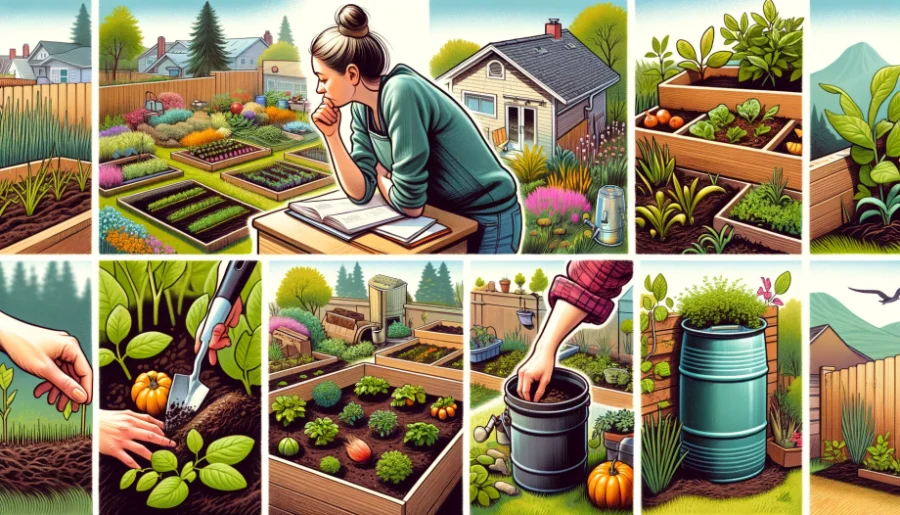
Getting your backyard ready for gardening is an exciting step towards creating your own green oasis. Here’s how to prep your space for planting:
- Clear the Area: Start by removing any debris, rocks, or unwanted plants from the area you plan to garden in.
- Test the Soil: Grab a DIY soil testing kit or consult a pro to find out what your soil is made of and what it might be lacking.
- Amend the Soil: Based on your soil test, enrich the soil with:
- Compost
- Peat moss
- Aged manure
- Adjust pH Levels: If needed, use lime to raise the pH or sulfur to lower it, creating the perfect environment for your plants to thrive.
Steps for Clearing and Preparing the Soil
Once your backyard is prepped, it’s time to focus on the soil:
- Remove Weeds: Get rid of weeds by hand or with a hoe, making sure to pull out the roots to prevent them from coming back.
- Loosen the Soil: Break up compacted soil to improve drainage and make it easier for roots to grow. You can use a tiller or a garden fork for this.
- Add Nutrients: Mix in compost or fertilizer to give your soil a nutrient boost and create a fertile planting environment.
With these steps, you’ll have a well-prepared backyard ready to support a lush and productive garden. Happy gardening!
Exploring Different Types of Garden Beds
Garden beds come in various shapes and sizes, each with its own set of perks. Here’s a quick overview of the most popular types:
- Raised Beds: These are a hit among gardeners because they prevent soil compaction and enhance drainage. They’re perfect for growing veggies and herbs that love well-drained soil.
- Container Gardens: Ideal for those with limited space, container gardens offer flexibility in placement and add a decorative touch to your balcony, patio, or windowsill.
- In-Ground Beds: The classic choice, in-ground beds give your plants direct contact with the earth, making them great for deep-rooted veggies like carrots and potatoes.
DIY Garden Beds: Building Your Own
Ready to roll up your sleeves and create your own garden bed? Here’s a step-by-step guide:
- Pick the Perfect Spot: Look for an area with good sunlight, drainage, and easy access to water.
- Choose Your Materials: Go for durable options like wood, metal, or even recycled materials.
- Assemble the Frame: Put together your materials to form a sturdy frame. Make sure it’s the right size for your plants to spread their roots.
- Prep the Soil: Mix in some compost, aged manure, and peat moss to enrich the soil, providing a nourishing home for your plants.
- Plant Away: Fill your bed with the prepared soil, plant your seeds or seedlings, and give them a gentle watering.
With these steps, you’ll have a beautiful and productive garden bed in no time. Happy gardening!
Picking the Perfect Plants for Your Backyard Garden
Choosing the right plants for your backyard garden is all about finding the perfect match for your space and style. Here’s what to consider:
- Climate Compatibility: Make sure the plants you choose are suited to your local climate. Some plants bask in the heat, while others prefer cooler, wetter conditions.
- Sunlight Savvy: Pay attention to how much sun your garden gets. Some plants need a full day of sunshine, while others flourish in the shade.
- Soil Sensibility: Check your soil type. Is it sandy and well-draining, or is it rich and moist? Different plants have different soil preferences.
- Personal Touch: Think about what you love! Do you want a garden full of fragrant flowers, a patch of fresh veggies, or a mix of both? Choose plants that make you happy and fit your gardening goals.
By keeping these factors in mind, you’ll be well on your way to creating a garden that’s both beautiful and bountiful. Happy planting!
Keeping Your Backyard Garden Thriving
A well-maintained garden is the key to vibrant plants and a bountiful harvest. Here’s how to keep your garden in top shape:
- Water Wisely: Set up a watering schedule that suits the needs of your plants. Remember, different plants have different thirst levels!
- Fertilize Thoughtfully: Feed your plants with the right balance of nutrients. Slow-release fertilizers or organic options like compost and manure are great choices for healthy soil and plants.
- Weed Regularly: Keep those pesky weeds at bay to ensure your plants aren’t competing for nutrients and space.
- Monitor Plant Health: Keep an eye out for signs of pests or disease. Catching problems early can make all the difference.
Investing a little time and care into your garden maintenance can lead to a lush, thriving garden that’s a joy to behold.
Smart Watering and Fertilizing Tips for a Thriving Garden
Think about getting a soaker hose or drip irrigation system. These nifty gadgets make sure water gets right to the roots without wasting a drop.
When it comes to feeding your plants, it’s all about finding the right balance.
A slow-release fertilizer gives them a steady diet of nutrients, while organic options like compost and manure are like a superfood smoothie for your soil.
Plus, they’re great for keeping those helpful little microorganisms happy and busy.
Optimal Watering and Fertilizing Techniques for a Healthy Garden
To keep your garden flourishing, it’s essential to nail down the best practices for watering and fertilizing:
- Consistent Moisture: Ensure your plants get a steady supply of water. This helps them grow strong and healthy.
- Deep Watering: Give your plants a good soak, but not too often. This encourages their roots to reach deeper into the soil, making them more drought-resistant.
- Organic Fertilizers: Using natural fertilizers like compost or manure not only feeds your plants but also keeps the soil alive with beneficial microbes.
By following these simple guidelines, you’ll be well on your way to nurturing a vibrant and productive garden.
Efficient Watering Techniques for the Garden
Keeping your garden hydrated doesn’t have to be a guessing game.
With the right tools and a bit of know-how, you can make sure every plant gets just the right amount of water:
- Drip Irrigation & Soaker Hoses: These systems are game-changers! They deliver water straight to the roots, where it’s needed most, and help cut down on evaporation. It’s a win-win for water efficiency and plant health.
- Know Your Plants: Different plants have different thirst levels.
Take some time to learn about the water needs of each variety in your garden and tailor your watering schedule to match.
This way, you’ll avoid over- or under-watering and keep your plants happy.
By adopting these smart watering techniques, you’ll ensure that your garden remains lush and thriving, even during the hottest days of summer.
Managing Pests and Diseases in Your Garden
Keeping your garden free from pests and diseases is crucial for a healthy and thriving outdoor space. Here’s how to stay on top of things:
Regular Inspections:
- Stay Vigilant: Regularly check your plants for any signs of trouble. Look out for unusual spots, discolored leaves, or stunted growth.
- Catch It Early: The sooner you spot a problem, the easier it is to manage. Keep an eye on your plant’s overall health and act quickly if something seems off.
Common Garden Pests and How to Treat Them
Even the most well-maintained gardens can face the occasional pest problem.
Here’s a look at some common culprits and how to deal with them:
- Aphids: These tiny pests can quickly overrun a plant, sucking the sap and weakening it. A strong blast of water from a hose can knock them off, and insecticidal soap or neem oil can help keep them at bay.
- Spider Mites: These minuscule mites can cause big problems, especially in hot, dry conditions. Look for fine webbing on the undersides of leaves. A misting of water can help increase humidity and deter them, while neem oil or insecticidal soap can help control infestations.
- Caterpillars: While they might turn into beautiful butterflies or moths, caterpillars can munch through leaves at an alarming rate. Handpicking them off your plants or using Bacillus thuringiensis (BT), a natural bacterial toxin, can help keep them in check.
For all pest problems, it’s essential to act quickly and consistently.
Regular monitoring and early intervention can prevent a small issue from turning into a full-blown infestation.
Natural Remedies and Preventive Measures:
- Beneficial Insects: Welcome natural predators like ladybugs and lacewings into your garden. They can help keep pest populations in check without the need for harsh chemicals.
- Crop Rotation: Switch up where you plant certain crops each year. This can help prevent soil-borne diseases from taking hold.
- Proper Spacing: Give your plants room to breathe. Proper spacing ensures good air circulation, reducing the risk of fungal diseases.
By implementing these strategies, you can protect your garden from pests and diseases and enjoy a bountiful harvest.
Pruning and Harvesting: Keeping Your Garden in Tip-Top Shape
To keep your garden thriving, it’s important to give your plants a little TLC through regular pruning and timely harvesting:
Pruning for Health and Growth:
- Out with the Old: Regularly snip away dead or overgrown branches. This opens up the plant to more sunlight and air, which is vital for its health.
- Encourage Efficiency: By cutting back excess growth, you’re helping your plants focus their energy on producing bigger and better fruits and flowers.
Harvesting for Flavor and Nutrition:
- Timing Is Everything: Pick your fruits and veggies when they’re at their peak ripeness. This is when they’re most flavorful and packed with nutrients.
- Gentle Handling: Be careful not to damage the plant or its remaining fruits when harvesting. Use clean, sharp tools and a gentle touch.
By staying on top of pruning and harvesting, you’ll ensure your garden remains healthy, productive, and delicious!
Growing and Transforming Your Backyard Sanctuary:
Tips for Expanding Your Backyard Garden
Transforming your backyard garden is an exciting journey that lets you play with new plants, designs, and techniques, all while boosting the charm and yield of your outdoor haven.
Embracing New Plant Varieties:
- Innovative Introductions: Keep an eye out for new and exciting plant varieties to add to your garden. It’s a great way to keep things fresh and interesting.
- Go Native: Consider incorporating native plants that are well-adapted to your area’s climate and soil. They’re often easier to care for and more resilient, making your garden more sustainable.
Redesigning Your Garden Layout:
- Create Focal Points: Change up your garden’s layout to introduce eye-catching elements that draw attention and add beauty.
- Maximize Space: Think about adding pathways, cozy seating spots, or vertical gardens to make the most of your available space and create a welcoming vibe.
Adding Creative Touches:
- Water Features and More: Bring in elements like water features, bird feeders, or artistic sculptures to enhance the visual appeal of your garden and attract friendly wildlife.
By experimenting with these ideas, you’ll not only beautify your garden but also create a dynamic and inviting space that everyone can enjoy.
Creative Ways to Maximize Your Garden Space
If you’re looking to get more out of your garden, there are plenty of innovative methods to expand your growing area:
- Vertical Gardening: Take your plants to new heights! Utilize walls or structures to grow upwards, saving precious ground space.
- Container Gardening: Perfect for small or unconventional spaces, container gardening lets you bring greenery to balconies, patios, or windowsills.
- Trellises: Add charm and support for climbing plants with trellises, which can enhance your garden’s look without taking up much space.
- Raised Beds: These are great for root development and can make planting and maintenance a breeze, especially if bending or kneeling is a challenge.
- Underutilized Spaces: Get creative with areas like fences or railings. Even the smallest spots can be turned into vibrant green nooks.
By exploring these options, you can transform even the most compact areas into flourishing garden spaces.
Introducing New Plants and Varieties: A Fresh Look for Your Garden
Adding new plants and varieties to your garden is like giving it a mini-makeover. Here’s how you can bring in some fresh vibes:
- Diversity is Key: Experiment with different species, colors, and flavors. It’s a great way to keep things interesting and add some culinary surprises to your plate.
- Aesthetic Harmony: Think about the overall look you’re going for. A mix of textures, heights, and bloom times can create a beautifully balanced garden.
- Attracting Friends: Diverse plants attract a variety of beneficial critters like insects, birds, and pollinators, which all contribute to a healthy garden ecosystem.
- Growth Requirements: Before bringing in new plants, check their needs for sunlight, soil, and water to ensure they’ll thrive in your garden.
- Planting Techniques: Pay attention to spacing and soil preparation. Proper planting ensures your new additions get off to a good start.
- Seasonal Excitement: Add plants with different flowering times to enjoy splashes of color and interest throughout the year.
By following these tips, you can introduce new plants and varieties to your garden, keeping it vibrant and ever-evolving.
Expanding and Evolving Your Backyard Garden FAQs
If you’re thinking about expanding and evolving your backyard garden, you might have some questions about where to start and how to make the most of your space.
Below, we’ve compiled a list of frequently asked questions to help you navigate the process of transforming your garden into a thriving, beautiful outdoor sanctuary.
Q: How do I completely redo my garden?
A: To completely redo your garden, start by assessing your current layout and identifying what you’d like to change.
Consider factors such as sunlight, soil quality, and your desired plants.
Remove any unwanted elements, improve the soil, and design a new layout that suits your needs and preferences.
Q: Can you turn your entire yard into a garden?
A: Yes, you can turn your entire yard into a garden. Plan the layout carefully, considering pathways, seating areas, and plant placement.
Utilize vertical space and raised beds to maximize growing areas.
Incorporate a variety of plants, including vegetables, herbs, flowers, and shrubs, to create a diverse and productive garden.
Q: How do you transform an old garden?
A: To transform an old garden, start by clearing out overgrown or unwanted plants.
Assess the soil quality and make necessary improvements.
Introduce new plants that suit your climate and design preferences.
Add features like paths, water elements, or garden art to enhance the space’s visual appeal.
Q: How can I maximize my backyard garden?
A: Maximize your backyard garden by utilizing vertical space with trellises or wall planters, incorporating raised beds for efficient use of space, and selecting plants with varying heights and growth habits.
Rotate crops to keep the soil healthy and plan your planting to ensure continuous harvest throughout the seasons.
Q: What adds the most value to a garden?
A: Adding features such as well-designed landscaping, outdoor living spaces, water features, and mature trees can significantly increase the value of a garden.
Incorporating low-maintenance and native plants can also enhance the appeal and sustainability of the space.
Q: What is the most space-efficient garden layout?
A: The most space-efficient garden layout is often a square-foot gardening layout, which divides the garden into small square sections to maximize planting space.
Vertical gardening and raised beds are also effective ways to use limited space efficiently.
Q: What are some benefits of expanding and evolving my backyard garden?
A: Expanding and evolving your backyard garden can increase your home’s curb appeal, provide fresh and organic produce for your family, and create a peaceful and enjoyable outdoor space for you to relax in.
Q: How can I expand my backyard garden?
A: There are a few ways to expand your backyard garden, such as adding raised beds, using vertical gardening techniques, or utilizing unused spaces like a small corner or wall.
Q: What are some tips for evolving my backyard garden?
A: To evolve your backyard garden, you can try experimenting with new plants, incorporating different design elements, or implementing sustainable gardening practices like composting and using rainwater.
Q: What should I consider before expanding my backyard garden?
A: Before expanding your backyard garden, it is important to assess the amount of space, sunlight, and water availability in your backyard.
You should also consider your gardening goals and the time and effort you are willing to invest.
Q: How can I keep my backyard garden evolving throughout the seasons?
A: To keep your backyard garden evolving throughout the seasons, you can plan for a variety of plants that thrive in different weather conditions.
You can also incorporate seasonal decorations and implement a regular maintenance routine.
Q: Are there any resources available to help with expanding and evolving my backyard garden?
A: Yes, there are many resources available such as gardening books, online tutorials, and local gardening communities that can provide tips, advice, and support for expanding and evolving your backyard garden.
Wrapping Up Your Garden Adventure
As you grow and transform your backyard garden, you embark on a rewarding journey that’s as much about personal growth as it is about cultivating plants.
Every seed sown and every flower bloomed is a step toward creating a space that’s uniquely yours, reflecting your style and passion for nature.
In this conclusion, we’ll celebrate the joys of gardening, the importance of sustainability, and the endless possibilities that lie ahead in your green oasis.
Let’s dig into the final thoughts on this garden adventure!
Embracing the Journey
Growing and transforming your backyard garden is an adventure that’s all about learning and evolving.
Relish in the changes and have a blast shaping a space that’s a true reflection of you and your green dreams.
The Sheer Joy of It All
Gardening is so much more than a pastime. It’s a way to bond with nature, boost your spirits, and craft a space that’s both stunning and fruitful.
Be proud of the progress you’ve made and the positive vibes your garden brings to your life and the world around you.
A Nod to Sustainability
As you jazz up your garden, think about weaving in eco-friendly habits like composting, saving water, and sticking to organic methods. These smart moves are a win-win for your garden and our lovely planet.
Sharing the Love
Don’t keep your gardening journey to yourself! Share the highs and lows with your buddies, family, and the community.
Whether it’s a post on social media, a tour of your garden, or just a casual invite to chill among your plants, spreading the word can spark the gardening bug in others.
Never Stop Learning
Gardening is a never-ending school of life. There’s always a new plant to try, a fresh technique to master, or a creative idea to bring to life.
Stay curious and open to what’s out there as you keep adding chapters to your garden story.
Read more: Backyard Gardening: A Comprehensive Guide
What’s Next?
As you gaze into the future, ponder over what new wonders you want to bring to your garden.
Maybe it’s new blooms, a revamped layout, or dabbling in different gardening styles.
The possibilities are endless, so keep dreaming big and planning for an even more glorious garden ahead.
Happy Gardening!
Related Content
Visit my Amazon Influencer Page for videos and gardening products Grow Your Own Garden





